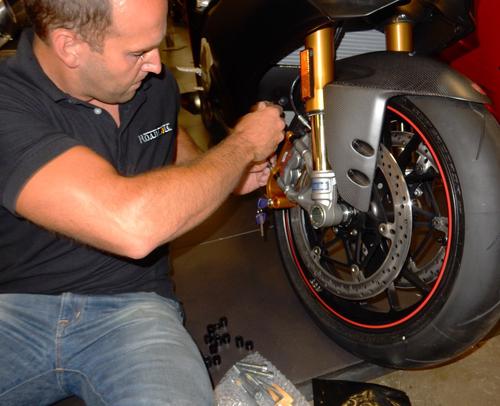July 9, 2015

When a new technology takes off and a garage-based company suddenly balloons into a real business, the question of leadership becomes essential. Is the inventor behind the tech idea capable -- or even willing -- to become a corporate CEO? If the company sells enough shares to investors or goes public, the inventor who started the company may actually get ousted, as with Steve Jobs at Apple or the Richard Hendricks character in the series Silicon Valley.

Mark Zuckerberg was able to hang on at Facebook. Google's founders, Sergey Brin and Larry Page, opted to hire an experienced business leader -- Steve Schmitt -- until Page learned enough to take the reins back. Apple took a precipitous dive in value and product quality until inventor Steve Jobs returned to revitalize the company.
MORE FROM DESIGN NEWS: The 10 Greatest Inventors of the Mid-20th Century
One inventor CEO believes there's great value in the product creator leading the company. Adam Xavier is the co-founder and CEO of RoadLoK, a motorcycle anti-theft company based in Santa Monica, Calif. Xavier patented the company's "immobilizer" in 2008. He left the company for a period, and returned when the enterprise began to falter. "The Apple story happened to our company in 2011," Xavier told Design News. "I left the company and it flat-lined. I came back and revitalized it."
Xavier attributes the up and down and back up pattern to the passion a creator/owner brings to the company -- a passion you can't always get from an MBA for hire. "Steve Jobs and his passion drove the brand," said Xavier. "Even if you're the best business person, you need the passion and drive to push the brand." Xavier explained that the passion of the owner is unique, not a quality that can be donned by even the most enthusiastic business leader. "There is a different kind of passion when the inventor is running the company. My board sometimes cautions me about my passion, but I disagree with that," he said. "When you have someone who is pushing a product, the passion is huge, especially in a niche market."
MORE FROM DESIGN NEWS: 2015 James Dyson Award Invites Innovation from Student Engineers
The passion of the owner comes in handy when it's time to persuade other companies to join in partnership with the product. "One really big advantage comes when you're trying to bring in a large client," said Xavier. "Having their decision makers sit with the actual inventor helps. They understand that the CEO's knowledge is greater than anyone else in the corporation."
The inventor/owner's technical expertise with the product is also a significant advantage when pushing the product into the marketplace. "The technical expertise helps when you're talking with engineers," said Xavier. "It changes the color of the conversation when they realize they're talking with the person who actually built the product."
For all the advantages of the owner/inventor's technical knowledge and passion, business expertise and capability is still required to make a business successful. Xavier turned to his investors for business help and education. "We were fortunate that several of the original investors helped us get our business sense," he said. "Typically angels get involved to get something up and going. Otherwise you need a very strong sales person."
Rob Spiegel has covered automation and control for 15 years, 12 of them for Design News. Other topics he has covered include supply chain technology, alternative energy, and cyber security. For 10 years he was owner and publisher of the food magazine, Chile Pepper.
About the Author(s)
You May Also Like





